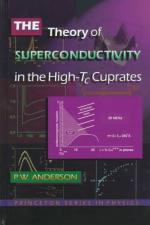|
This section contains 711 words (approx. 3 pages at 300 words per page) |

|
Superconductors are materials that exhibit zero electrical resistivity and become diamagnetic when they are cooled to a sufficiently low temperature. In the superconducting state, persistent electrical currents can flow without attenuation in superconducting rings for many years, and permanent magnets can be levitated by a superconductor. Because of these unique electrical and magnetic properties, superconductors have found wide applications in power transmission, magnetic energy storage, magnetometry, magnetic shielding, high-speed digital signal and data processing.
Superconductivity was discovered by the Dutch physicist H. Kammerling Onnes at the University of Leiden in 1911. After success in the liquification of helium (He), Onnes observed that the electrical resistivity of a mercury filament drops abruptly to an experimentally undetectable value at a temperature near 4.2 K, the boiling point of liquid He.
The temperature below which the resistance of the material reaches zero is referred to as the superconducting transition temperature, or the critical...
|
This section contains 711 words (approx. 3 pages at 300 words per page) |

|


